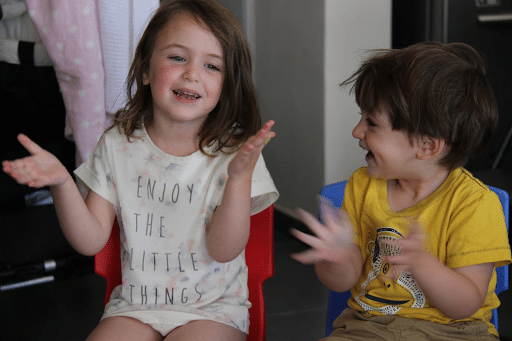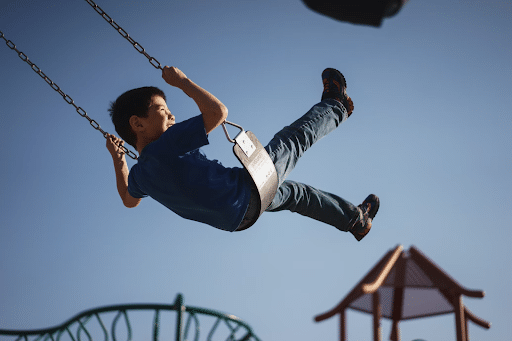Working with neurodivergent children in pediatric pelvic floor therapy requires patience, flexibility, and a good understanding of how their brains process sensory and bodily signals. Whether it’s autism, ADHD, or an intellectual disability, these kids often have unique challenges with bladder and bowel control. But with the right approach, you can help them make progress and gain independence.

Pelvic Floor Therapy For Neurodivergent Children
Like all pediatric patients, neurodivergent kids benefit from standard urotherapy—education, fluid intake, timed voiding, and constipation management. But here’s the key difference: progress will likely take longer. Comorbidities play a big role, so it’s important for you to set realistic expectations with the family from the start. What might take a neurotypical child a few weeks to master could take months for a neurodivergent child, and that’s okay.
It’s just as important (if not more so) to take a thorough history and involve parents in the subjective questioning during your initial evaluation. You need to understand where the child is coming from and what their previous therapy experience was like if they’ve been to speech, occupational, or physical therapy in the past.

Creating Structure And Adaptations In Pediatric Pelvic Floor Therapy
Many neurodivergent kids need extra support to understand and follow a voiding routine. That’s where behavioral adaptations come in. It’s important to be able to provide alternative schedules and options to these children, as your go-to ideas might not be received well.
Consistency is key. If a child is used to a certain routine at home, try to mimic that in therapy. Making what feels like small changes to you can be disruptive. Keeping things predictable helps lower anxiety and improve participation.

Helping them connect body signals to actions is crucial. A child might say, “I have to poop,” but not actually recognize what that means from an interoceptive standpoint. Others may not notice the urge at all.
Stimming And Regulation in Pediatric Pelvic Floor Therapy
When kids stim—rocking, spinning, flapping hands—it’s often a way to regulate their emotions or sensory input. For therapy, it’s a good idea to ask more questions about stimming in relation to toileting. Sometimes, small and simple adjustments regarding toileting routines can make a huge difference.
Dysregulation can quickly derail a session. Parents will often say their child “falls apart” when overwhelmed. Recognizing early signs—fidgeting, frustration, avoidance—can help you step in with regulation strategies like breathwork or vestibular input before the child shuts down.

Each neurodivergent child has unique preferences, but trends emerge based on their diagnosis. Let’s explore how pediatric pelvic floor therapy approaches differ for autism, ADHD, and intellectual disabilities.
Therapeutic Techniques For Children With Neurodivergent Diagnoses
Autism Spectrum Disorder (ASD)
Children with autism thrive with structure and predictability, so maintaining a consistent therapy environment helps reduce anxiety. Gradual changes ease transitions, and sensory modifications can make toileting more comfortable.
Keep instructions short, allow extra processing time, and support their need for routine in toileting tasks.
Attention-Deficit/Hyperactivity Disorder (ADHD)
Children with ADHD often benefit from shorter, structured therapy sessions. Breaking tasks into small, manageable chunks helps the child maintain focus and engagement.
Movement breaks are also useful to reset attention and regulate arousal levels. Some ADHD medications also have an anti-enuretic effect, which can be beneficial for therapy compliance and bladder control.

Children with Intellectual Disabilities
For children with intellectual disabilities, standard urotherapy remains the foundation, but immediate reinforcement is often more effective. Parental involvement is crucial, with modeling, visual aids, and breaking toileting into simple steps helping children learn. For bedwetting, medication may be more viable than alarms or waking protocols, as cognitive limitations can make it difficult to associate the urge to void with waking up in time.
Managing Setbacks In Pediatric Pelvic Floor Therapy For Neurodivergent Children
Helping neurodivergent children with pelvic floor therapy is a journey that requires time, patience, and consistency. Some kids will need weeks to master a single step, and that’s completely normal. The keys are to focus on their strengths, celebrate small wins, and maintain patience—both for yourself and for their families.

Parents should be prepared for regressions, especially during times of stress or change. At the end of the day, every child is different, and what works for one may not work for another. But with a structured, flexible, and understanding approach, you can help them navigate these challenges and gain confidence in their own bodies.
Want to learn more? Enrollment is now open for the Neurodiversity in Pediatric Pelvic Floor Therapy online mini-course. Join now and dive deeper into these strategies!
